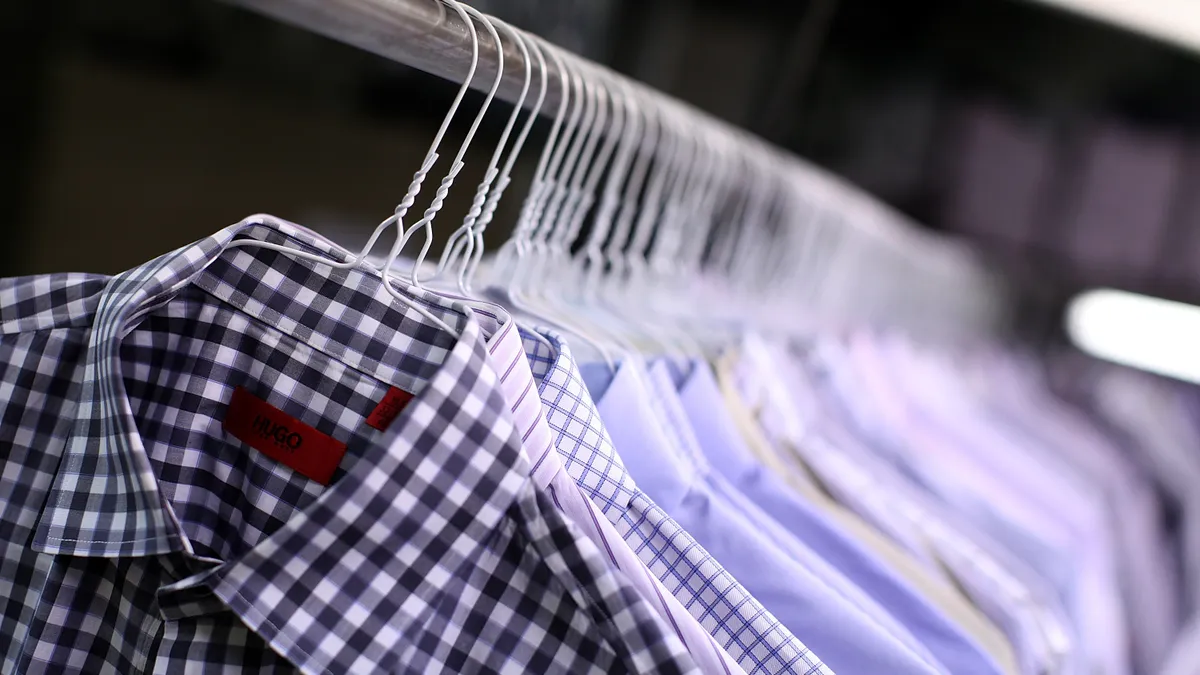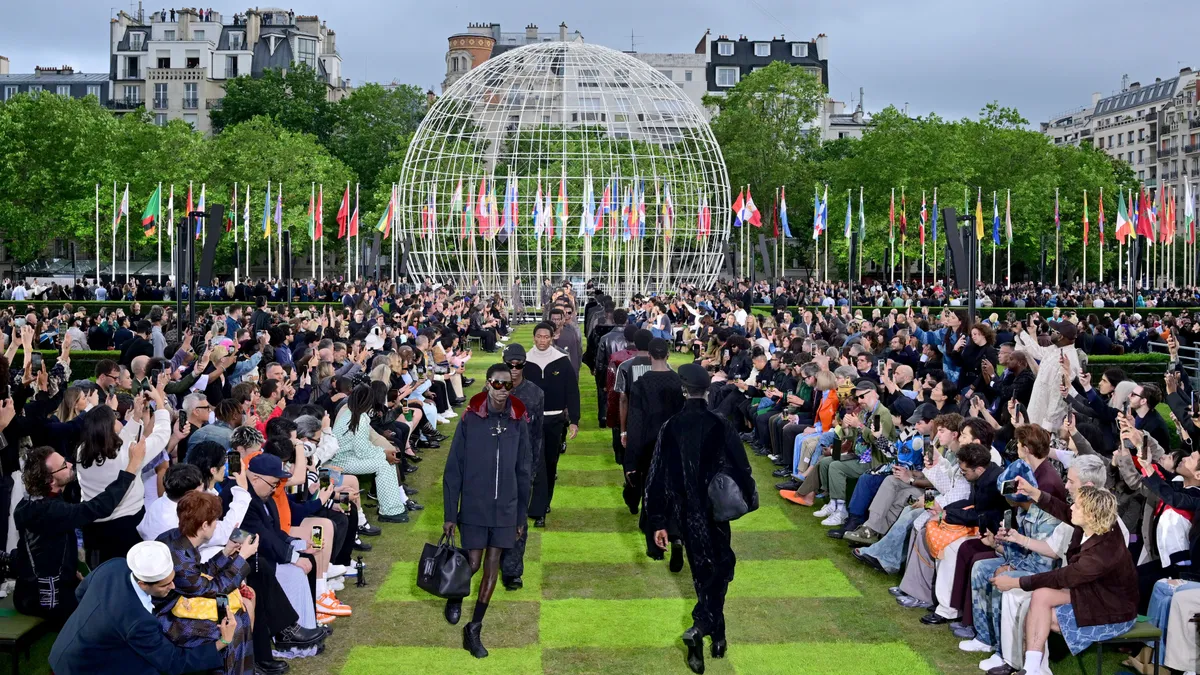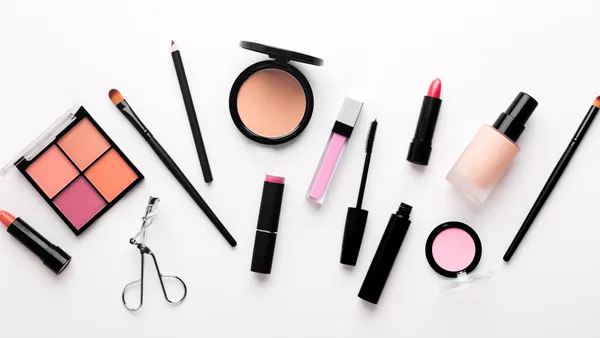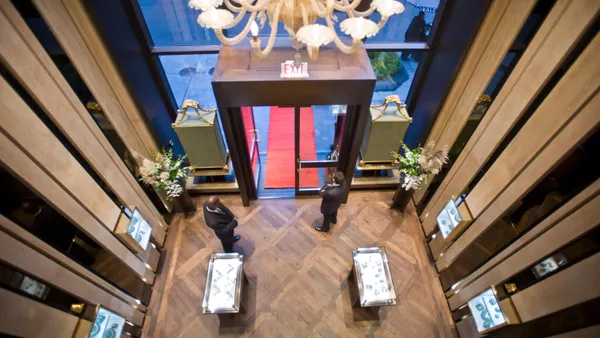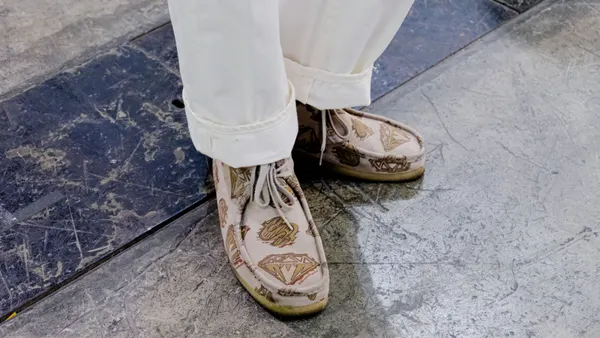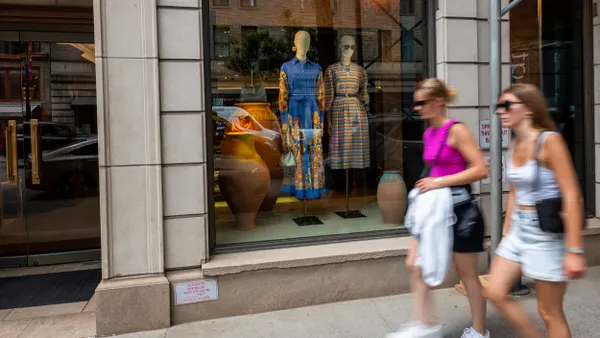Dive Brief:
- People are growing increasingly comfortable mixing traditionally gendered fashions, according to a report from Highsnobiety shared with Fashion Dive.
- A majority of respondents, 94%, said they would consider mixing masculine and feminine styles. However, only 37% of people who identify as men and 86% of people who identify as women actually do, which the report concluded could represent that people who identify as men are more constrained in fashion choices due to size and fit.
- The report, from Germany-based Highsnobiety, includes data from global “cultural pioneers” and is meant to measure what the future of menswear could look like, when more people are embracing clothing designed for different genders, per the report.
Dive Insight:
Highsnobiety defines its cultural pioneer group as people who are the first to adopt new products, brands and ideas in the luxury landscape and who serve as a litmus test for future trends.
While a large portion of respondents in the report note interest in buying clothes that aren’t made for the gender they identify as, a gap exists in actual purchasing decisions. When it came to respondents who identified as men, 60% said they had purchased womenswear. By contrast, 76% of respondents who identified as women said they purchased menswear.
This could show a practical issue in sizes available in clothing designed for women, according to the report. The fashion industry has continually struggled with the issue of size inclusivity for plus-sized men and nonbinary people. In the Highsnobiety report, 71% of respondents reported being able to tell when a brand is genuinely invested in gender fluidity or just co-opting a trend.
The issue of social norms was addressed as well. People who identified as men said they were more likely than people who identified as women to fear being judged when shopping for products that weren’t assigned to their gender identity, with 20% compared to 9%, respectively.
Accessories, beauty and jewelry serve as a gateway to style experimentation, per the report.
Despite changing trends, traditional menswear has seen an uptick in sales since the pandemic began, according to industry analysts. Menswear sales outpaced that of both womenswear and children’s clothing over the past 12 months, according to consumer advisor agency Circana, but some of this uptick can be attributed to higher-priced items.
Still, the report questions where the future of traditional menswear stands as more of the respondents noted being comfortable dressing in items beyond traditional gender norms. Of the respondents in the report, 32% self-identified as gender nonconforming, and 77% said gender doesn’t define a person as much as it used to.
“Unisex” clothing is often full, oversized or baggy, according to 48% of respondents, and 37% considered the word itself outdated. Still, 72% of respondents said they don’t feel pressured to dress in a way that reflects their gender, and 57% said they already mix masculine and feminine styles.
Nora Kleinewillinghoefer, associate partner in consumer practice for Kearney, said in an email that the fashion industry is adapting to focus more on fit, form and style rather than conforming to traditional gender norms.
“Brands are keenly attuned to the needs and desires of their customers, using advanced insights to shape their fashion assortments,” Kleinewillinghoefer said. “As cultural norms and trends evolve, the industry is poised to continuously cater to these evolving consumer needs.”
Beyond gender neutrality, menswear is seeing a shakeup in long held norms. The report found that 45% of men have noticed themselves wearing more colorful and flashy styles, including brighter hues and pieces with more flourish. Some of these motifs have been championed by pop star Harry Styles, now known for his fashion choices which bend traditionally gendered styles, and were seen in Alessandro Michele’s menswear collection for Gucci late last year.
Bright colors and accessories were key parts of Pharrell Williams’ debut for Louis Vuitton menswear last week, an indication that some themes from the report are already gaining ground.



